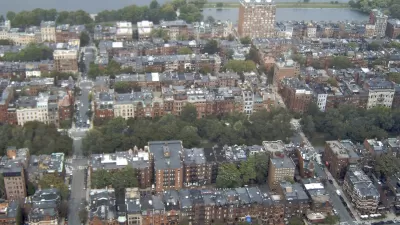The push for historic preservation districts often amounts to exclusionary zoning that exacerbates the housing affordability crisis.

Seattle's Mandatory Housing Affordability Program includes a provision that protects federally designated historic districts from zoning changes. Writing in The Urbanist, Mike Eliason argues that this protection amounts to a new form of restrictive covenant that will prevent denser development in many parts of the city and lead to an even bigger affordability crisis.
One such zone, Wallingford, is proposing a historic preservation district that would effectively freeze development in almost half of the Wallingford Urban Village Planning Area. The zone's proponents have also opposed more permissive accessory dwelling unit (ADU) regulations, reduced parking requirements, and affordable housing requirements.
Eliason contends that opposition to zoning changes that would increase density in a neighborhood central to transit and urban amenities hinders the city's efforts to make housing more affordable and meet climate goals. "From a historic standpoint, this is just another attempt by wealthy homeowners —who ironically are a minority of the Wallingford Urban Village—to keep those less well off out of their neighborhood." In the 1980s, local homeowners fought to have parts of the area downzoned to even further reduce opportunities for multi-family and student housing, despite the neighborhood's proximity to a university. Eliason admonishes readers to oppose the Wallington project and prevent historic preservation from becoming "yet another tool wielded by those living in exclusive enclaves to prevent rezoning for a more equitable, inclusive, and sustainable city."
FULL STORY: Are Historic Districts a New Variation to Restrictive Covenants?

Maui's Vacation Rental Debate Turns Ugly
Verbal attacks, misinformation campaigns and fistfights plague a high-stakes debate to convert thousands of vacation rentals into long-term housing.

Planetizen Federal Action Tracker
A weekly monitor of how Trump’s orders and actions are impacting planners and planning in America.

In Urban Planning, AI Prompting Could be the New Design Thinking
Creativity has long been key to great urban design. What if we see AI as our new creative partner?

King County Supportive Housing Program Offers Hope for Unhoused Residents
The county is taking a ‘Housing First’ approach that prioritizes getting people into housing, then offering wraparound supportive services.

Researchers Use AI to Get Clearer Picture of US Housing
Analysts are using artificial intelligence to supercharge their research by allowing them to comb through data faster. Though these AI tools can be error prone, they save time and housing researchers are optimistic about the future.

Making Shared Micromobility More Inclusive
Cities and shared mobility system operators can do more to include people with disabilities in planning and operations, per a new report.
Urban Design for Planners 1: Software Tools
This six-course series explores essential urban design concepts using open source software and equips planners with the tools they need to participate fully in the urban design process.
Planning for Universal Design
Learn the tools for implementing Universal Design in planning regulations.
planning NEXT
Appalachian Highlands Housing Partners
Mpact (founded as Rail~Volution)
City of Camden Redevelopment Agency
City of Astoria
City of Portland
City of Laramie





























